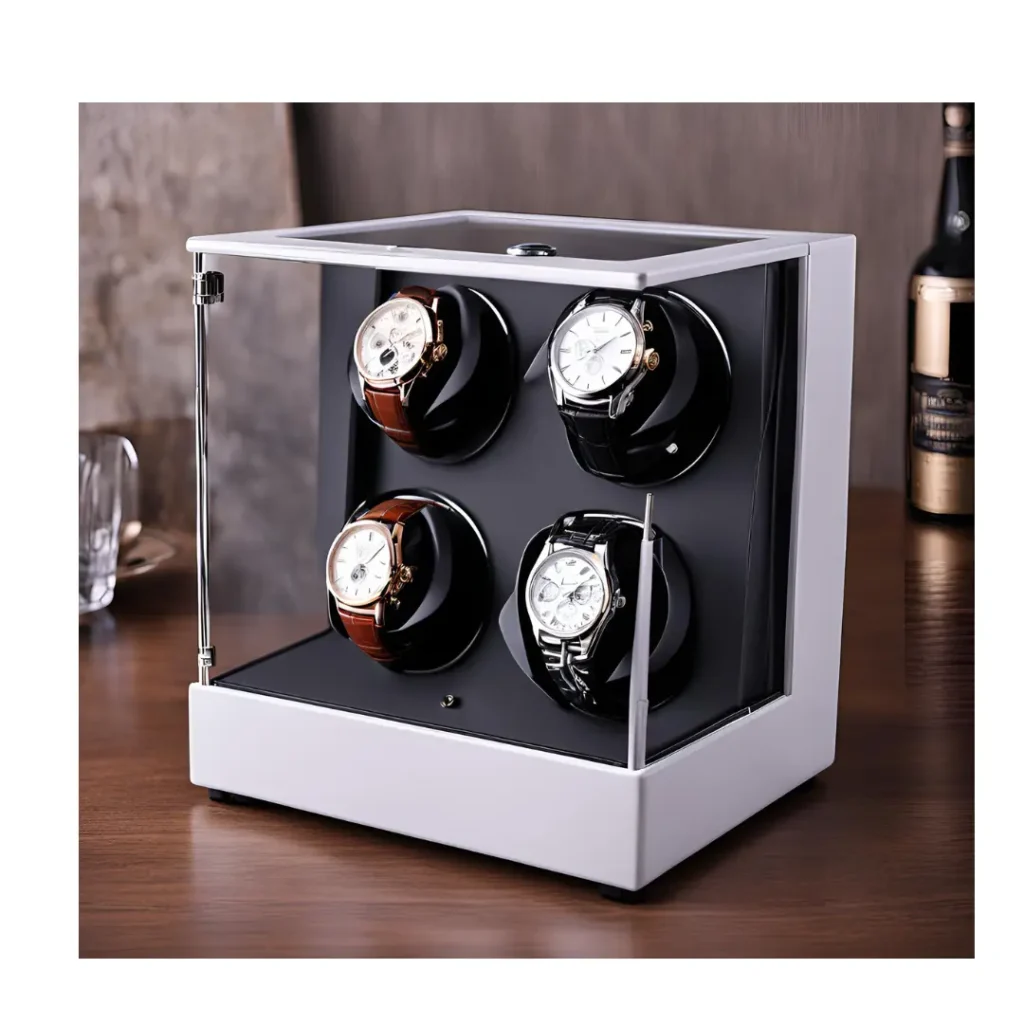Authentic Quartz World
Purpose Of An Automatic Watch Winder
Before discussing the purpose of an Automatic Watch Winder, let us understand what exactly an Automatic Watch Winder is and how it manages its power.

What is an Automatic Watch Winder?
An Automatic Watch Winder ensures that a sophisticated timepiece remains wound, having the ability to preserve its power reserve and manage the date and time functions when it’s not being worn on the wrist.
A watch winder is a device crafted to maintain the winding of automatic watches during periods of non-use. If you anticipate taking off your watch for more than 24 hours, a watch winder becomes handy in ensuring its accuracy. Like a car sitting idle in a garage, prolonged inactivity can harm an automatic watch.
An automatic watch winder operates without a battery or electric motor. Rather, it relies on a rotor that rotates as the wearer moves, ensuring the watch stays wound continuously. Everyday motion generates sufficient rotation in the rotor to sustain the watch for more than 30 hours. However, prolonged periods of inactivity may necessitate using a watch winder.
How Does Automatic Watch Winder Work?
An Automatic Watch Winder is a mechanical device that mimics wrist movement by rotating your watch when it’s not worn. This action ensures the movement stays powered, keeping your watch ready for use without the need for resetting after periods of inactivity. This feature proves particularly beneficial for watches with complications like ‘day-date’ and ‘moon-phase’, saving considerable time. However, the utility of watch winders extends beyond this primary function!
Purpose Of an Automatic Watch Winder:
A quality watch winder ensures the good health of your watch collection. After taking the desired watch out of the winding chamber, the owner should be able to wear it directly without needing to wind it up. The device keeps the mainspring wound at regular intervals, mimicking the motion the watch experiences when worn on the wrist.
It is designed for intermittent or periodic rotation rather than continuous operation, allowing you to control the number of turns per day (TPD)—ranging from approximately 1500 to 1,800 daily turns. Depending on the watch, it provides unidirectional or bidirectional winding options. Note: winding a watch the wrong way can damage it. A watch should ideally be positioned vertically within the winder to optimize the effects of gravity with each rotation. Brands such as Wolf provide a user manual that details the required TPD and the direction of winding for specific watches. For instance, some watches with lengthy power reserves can be wound after extended periods.